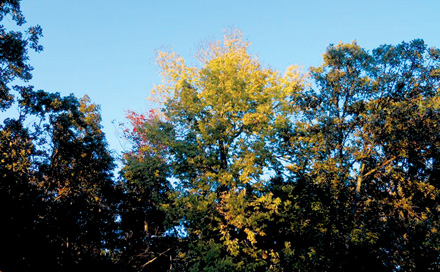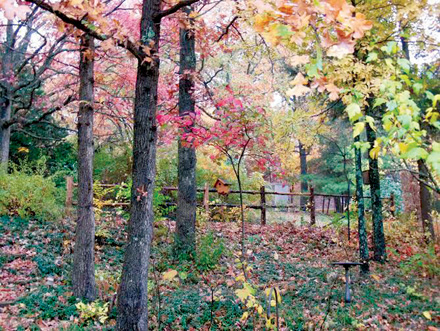Peak of fall color

Suggested headline: I miss some of the calls, people wanting to know when fall colors will reach their peak. It was a yearly project where I used to work.
It started with my trying to convince silviculture specialists in August to “guess” at what kind of fall colors we would have later that year. After getting through the long lectures on how tree leaves change color and why guessing was not a scientific approach, we would end up back at the original question.
Some would ignore my follow-up calls. Others would get into the spirit and wax poetic, even going so far as to sharing what their favorite fall tree was. It was still dicey to get them to commit to a prediction but I could waffle around some of what they said. These are precise people. If you have never tried to convince a scientist to make an educated guess, trust me, it’s a fine art.
I was thinking about those conversations earlier this week as I was walking through my garden, trying to guess what trees were turning based on their fall leaf color:
• Dogwoods are easy, they turn a variety of reds and tend to stand out against other fall colors.
• Hickories are yellow. So are oaks, which turn yellow, orange and brown, depending on their unique species.
• I don’t have peachy sugar maples but there are enough around town to enjoy them as I drive by.
Tree leaves are not the same color the rest of the year. We just don’t see them until a change in light and temperature triggers the decline of green chlorophyll to let colors shine through.
Leaves are fascinating solar-powered factories that produce most of the food trees need. Leaves contain chlorophyll, which absorbs sunlight and turns carbon dioxide and water into carbohydrates, such as sugars and starch. Hidden in those leaves are yellow to orange pigments, which also give carrots and pumpkins their color.
In fall, changes in daylight and temperature signal trees to stop producing food. Chlorophyll breaks down, the green color disappears, and the yellow to orange colors become visible.
As leaves undergo other chemical changes, additional colors appear, such as red anthocyanin pigments. Those pigments give leaves their reddish to purplish colors, while sugar maples show peach and orange. All these colors are due to the mixing of varying amounts of chlorophyll residue and other leaf pigments.
One of the reasons guessing the peak of fall color is not easy is that temperature, light and water supply all have an influence on fall color degree and duration. Low temperatures above freezing will favor trees producing anthocyanin. Early frost will weaken the brilliant red color. Rainy and overcast days sometimes increase fall color intensity. Rainy days can also mark the immediate end of fall colors when wind blows leaves off.
Fall colors move from north to south, usually reaching their peak in mid-Missouri in mid to late October. Don’t worry about when it will peak, it changes daily so sit back and enjoy the show.
Charlotte Ekker Wiggins is a certified gardener, beekeeper and sometimes cook. Copyright 2016 used with permission, all rights reserved. This material may not be published, broadcast, rewritten or redistributed. Contact Charlotte at chargardens@gmail.com.

LOOKING UP – One of the best ways to enjoy fall color is to look at tree tops against a blue sky. Lying on a blanket and looking up helps, as does having a full picnic basket nearby. (Photos by Charlotte Ekker Wiggins).

BACK YARD BEAUTY – Theodore, center, a very special native dogwood in my garden, is one of the first trees to turn red early in the fall season. Can you identify the other trees?



Facebook Comments